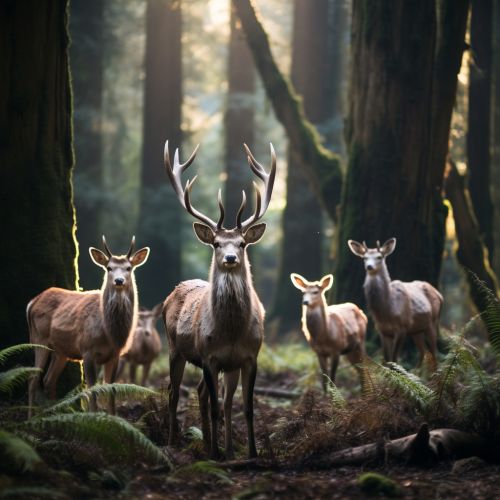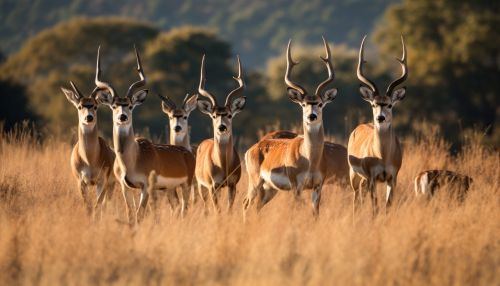Ungulate
Introduction
Ungulates are a diverse group of large mammals that are characterized by their hooves. The term "ungulate" comes from the Latin ungula, meaning "hoof". This group includes animals such as horses, cows, deer, and elephants. These animals are found all over the world, in a variety of habitats, from deserts to forests to grasslands. They play a crucial role in the ecosystems they inhabit, often serving as prey for large predators and helping to shape the landscape through their feeding habits.


Classification
Ungulates are typically classified into two orders: perissodactyls and artiodactyls. Perissodactyls, or "odd-toed" ungulates, include horses, rhinos, and tapirs. These animals have an odd number of toes on their hind feet and are often characterized by their large, barrel-shaped bodies. Artiodactyls, or "even-toed" ungulates, include animals such as deer, cows, pigs, and camels. These animals have an even number of toes on their hind feet and are often characterized by their ruminant digestive system.
There is a third group of animals that are sometimes considered ungulates: the proboscideans, which includes elephants. These animals have a unique foot structure that is different from other ungulates, but they share many other characteristics with this group, such as a large body size and a herbivorous diet.
Anatomy and Physiology
Ungulates have a number of anatomical and physiological adaptations that allow them to thrive in their environments. One of the most notable of these is their hooves. The hooves of ungulates are made of a tough, keratinous material that provides protection for their feet. This is particularly important for animals that live in harsh environments, such as deserts or rocky terrain, where their feet may be exposed to sharp rocks or hot sand.
Another important adaptation is their digestive system. Many ungulates are ruminants, meaning they have a specialized stomach that allows them to ferment plant material, breaking it down into nutrients that can be absorbed. This is particularly important for animals that eat a diet high in fibrous plant material, which can be difficult to digest.
Ungulates also have a number of adaptations related to their size. Many ungulates are large animals, and they have a number of features that help them support their weight. These include strong, robust bones and a large, barrel-shaped body that helps distribute their weight evenly.
Behavior
Ungulates exhibit a wide range of behaviors, many of which are related to their diet and lifestyle. Many ungulates are social animals, living in groups that can range from a few individuals to herds of hundreds or even thousands of animals. These groups can provide protection from predators, as well as opportunities for mating and social interaction.
Many ungulates are also migratory, traveling long distances in search of food and water. These migrations can be a crucial part of the ecosystem, as they can help distribute nutrients and shape the landscape.
Ungulates also have a number of behaviors related to their diet. Many ungulates are grazers, feeding on grasses and other low-growing plants. Others are browsers, feeding on leaves, twigs, and other plant material. Some ungulates are also capable of digging or rooting in the soil to find food.
Conservation
Many species of ungulates are threatened by habitat loss, hunting, and other human activities. Conservation efforts for these animals often focus on protecting their habitats and regulating hunting to ensure that populations remain stable. In some cases, captive breeding programs may also be used to help boost populations of endangered species.
Despite these threats, many species of ungulates are still abundant, and they play a crucial role in the ecosystems they inhabit. They serve as prey for many large predators, and their feeding habits can help shape the landscape and influence the types of plants that grow there.
